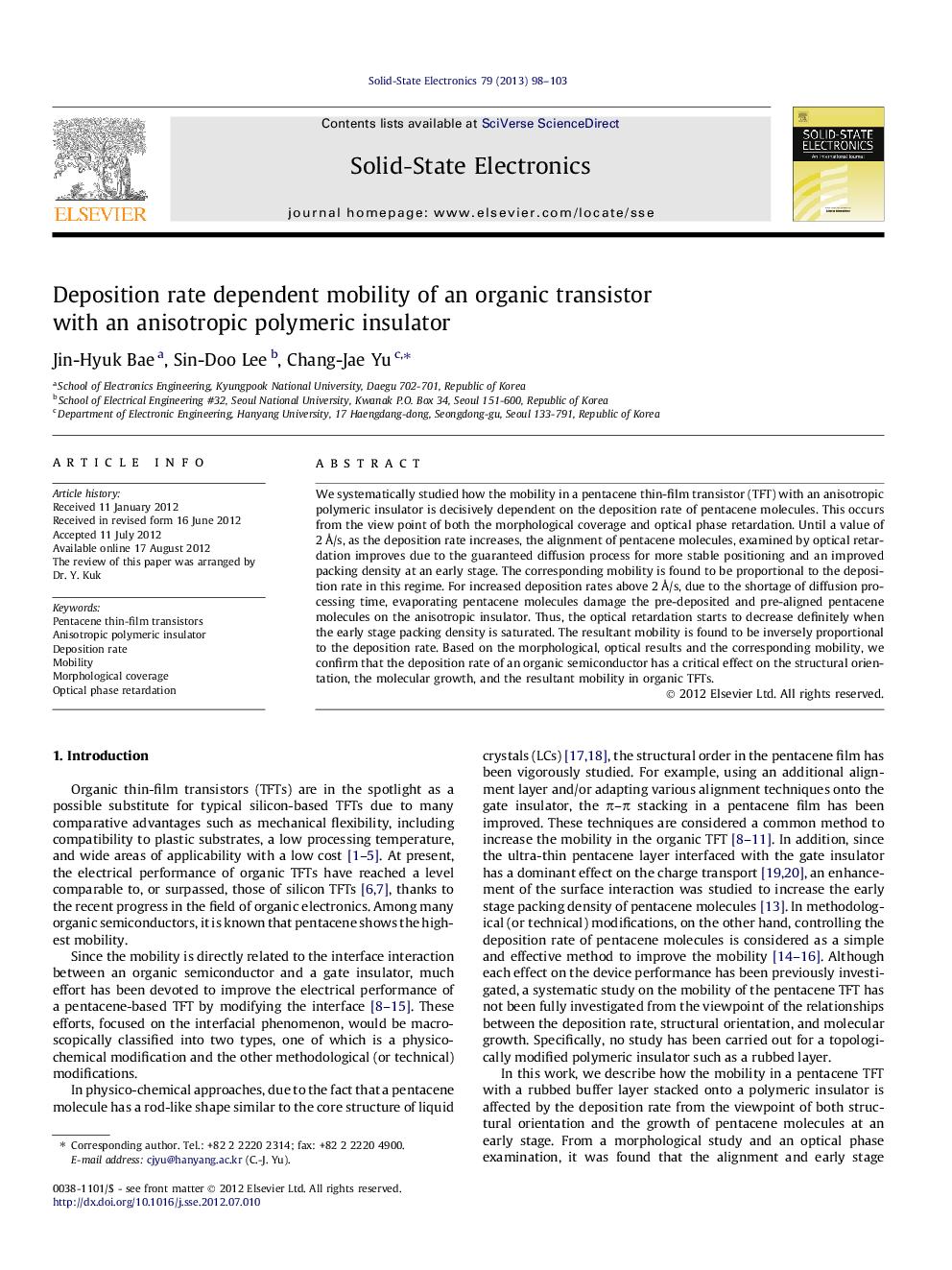| Article ID | Journal | Published Year | Pages | File Type |
|---|---|---|---|---|
| 748440 | Solid-State Electronics | 2013 | 6 Pages |
We systematically studied how the mobility in a pentacene thin-film transistor (TFT) with an anisotropic polymeric insulator is decisively dependent on the deposition rate of pentacene molecules. This occurs from the view point of both the morphological coverage and optical phase retardation. Until a value of 2 Å/s, as the deposition rate increases, the alignment of pentacene molecules, examined by optical retardation improves due to the guaranteed diffusion process for more stable positioning and an improved packing density at an early stage. The corresponding mobility is found to be proportional to the deposition rate in this regime. For increased deposition rates above 2 Å/s, due to the shortage of diffusion processing time, evaporating pentacene molecules damage the pre-deposited and pre-aligned pentacene molecules on the anisotropic insulator. Thus, the optical retardation starts to decrease definitely when the early stage packing density is saturated. The resultant mobility is found to be inversely proportional to the deposition rate. Based on the morphological, optical results and the corresponding mobility, we confirm that the deposition rate of an organic semiconductor has a critical effect on the structural orientation, the molecular growth, and the resultant mobility in organic TFTs.
Graphical abstractFigure optionsDownload full-size imageDownload as PowerPoint slideHighlights► Deposition rate dependent mobility was systematically studied on an anisotropic insulator. ► Initial growth of organic semiconductor was examined as a function of deposition rate. ► Optical anisotropy of organic semiconductor was examined as a function of deposition rate. ► The physical origin why the mobility is dependent on the deposition rate was described.
